Shenzhen, a major city in Guangdong Province, China, is only one of the country’s many futuristic cities that gives us access to what the future looks like. Established as China’s first special economic zone since the 80s, Shenzhen’s fast-growing urbanism led the city to otherworldly architectural development, so visionary and ethereal, that you wouldn’t believe existed today.

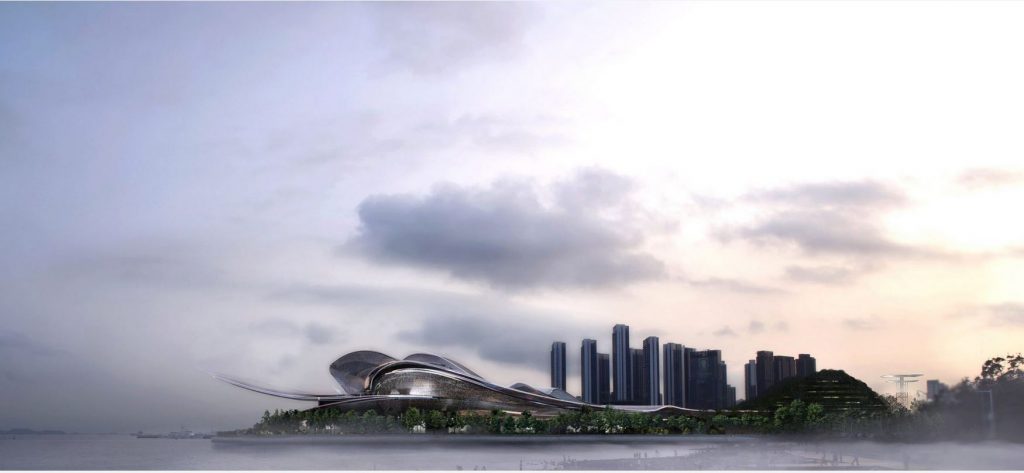
Shenzhen Opera House by Ateliers Jean Nouvel (also header image)
Pritzker Prize-winning architect Jean Nouvel’s studio with bases in Paris and Shanghai has won an invited international architecture competition for an opera house on the waterfront in Shenzhen, upstaging other entrants that included BIG Builds, Snøhetta, MVRDV and Kengo Kuma.
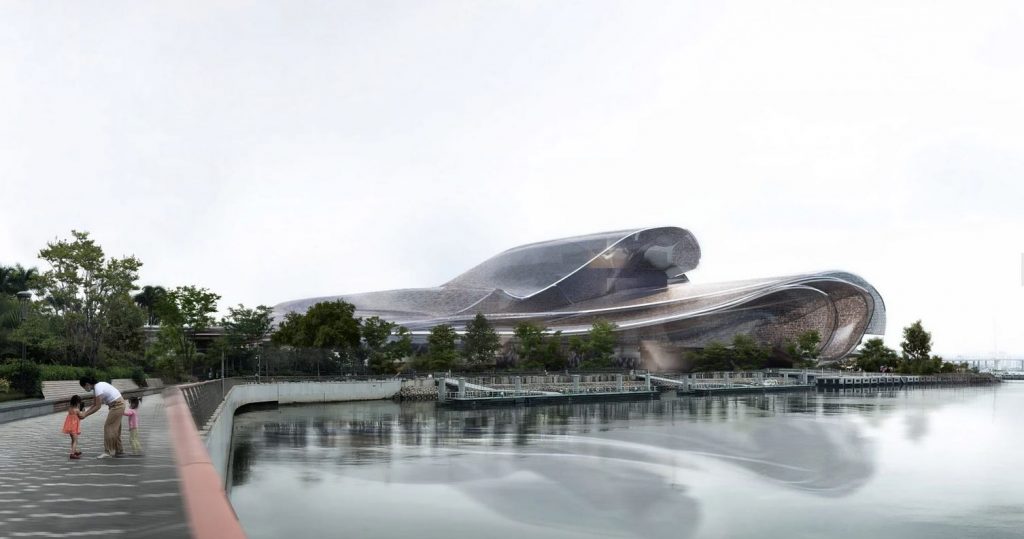
Shenzhen Opera House by Ateliers Jean Nouvel
Designed to be located on the Shekou Peninsula, a site overlooking Shenzhen Bay, the winning entry envisions a 220,000-square-metre cultural landmark that will stretch out along the waterfront and will consist of a 2,300-seat opera hall, a 1,800-seat concert theatre and an 800-seat venue for operettas among its many facilities, which will be covered by a curving roofscape. The design aims to establish a connection to the South China Sea, celebrating the city’s history as a fishing village and its existing promenade.
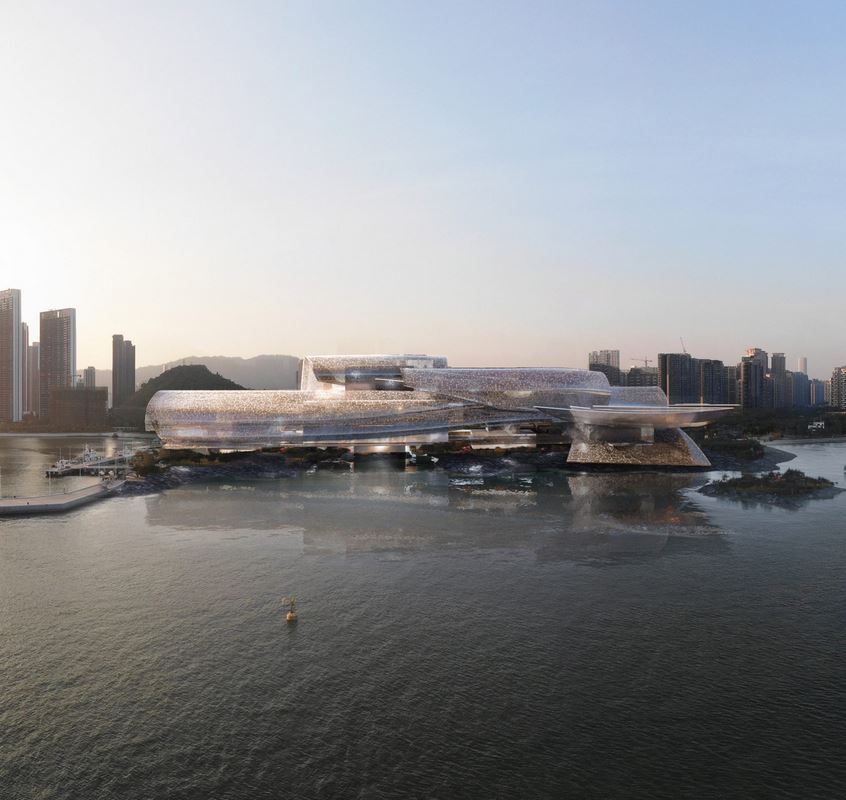
Shenzhen Opera House by Ateliers Jean Nouvel
To help further connect the building to the surrounding water, iridescent materials such as mother-of-pearl, a luminous material produced in the shells of some mollusks, will be used to decorate the main foyer as well as the walls and balconies in the main auditorium. Using the lustrous white reflections of a nacreous material is intended to symbolize meeting of sea and music and light. The main hall will also incorporate a large loggia that will open out onto terraces overlooking the sea. According to the architect, the sea will be “both around you and over you.”


Shenzhen Opera House by Ateliers Jean Nouvel
As envisioned by the Shenzhen government, the new opera house will become the centrepiece of its wider masterplan for the city, which involves the construction of nine other cultural landmarks.
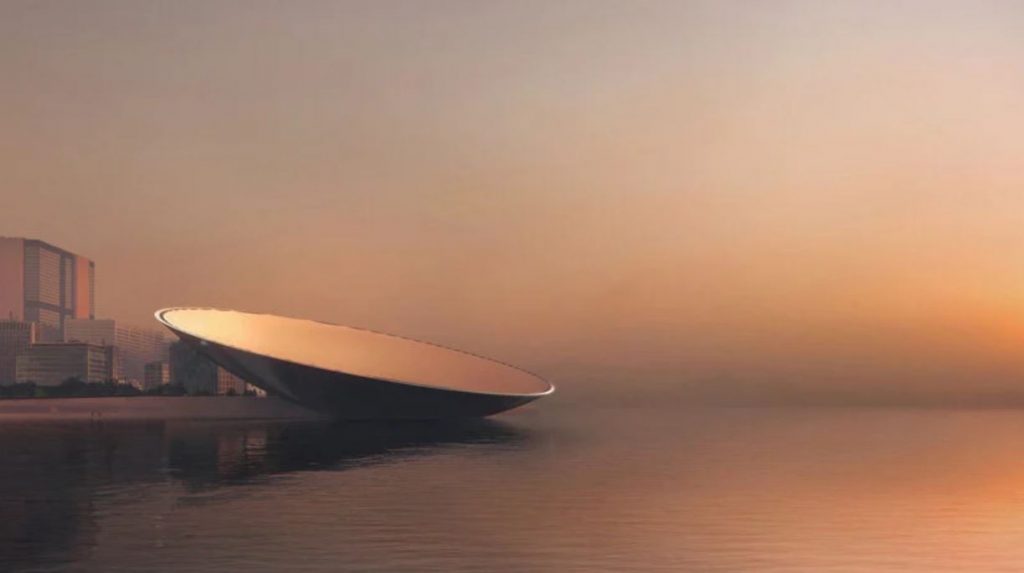
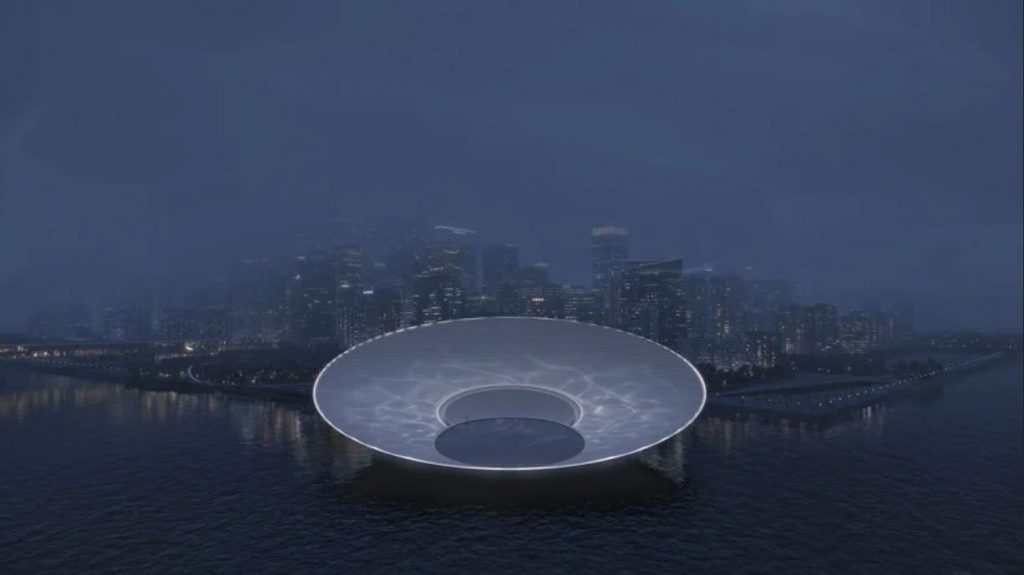
Lunar proposal by Snøhetta
Lunar by Snøhetta is a design proposal for one of these landmarks created for the international competition for the Qianhai New City Center in Shenzhen. The entry was ranked second place alongside Sou Fujimoto’s floating tower. Conceived as a landmark of the data era, the project embodies the city’s pioneer spirit and references both its maritime past and technological future.
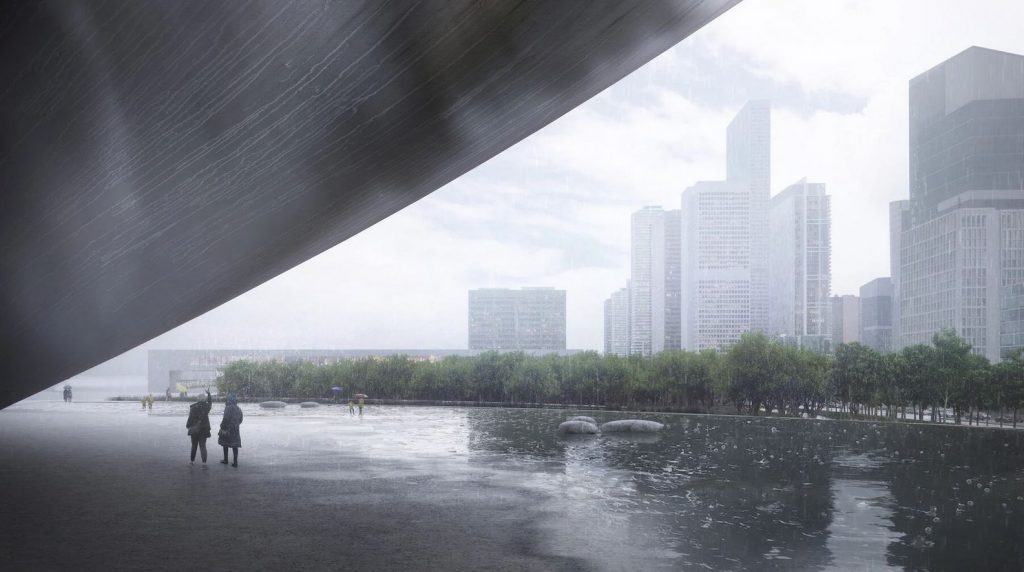
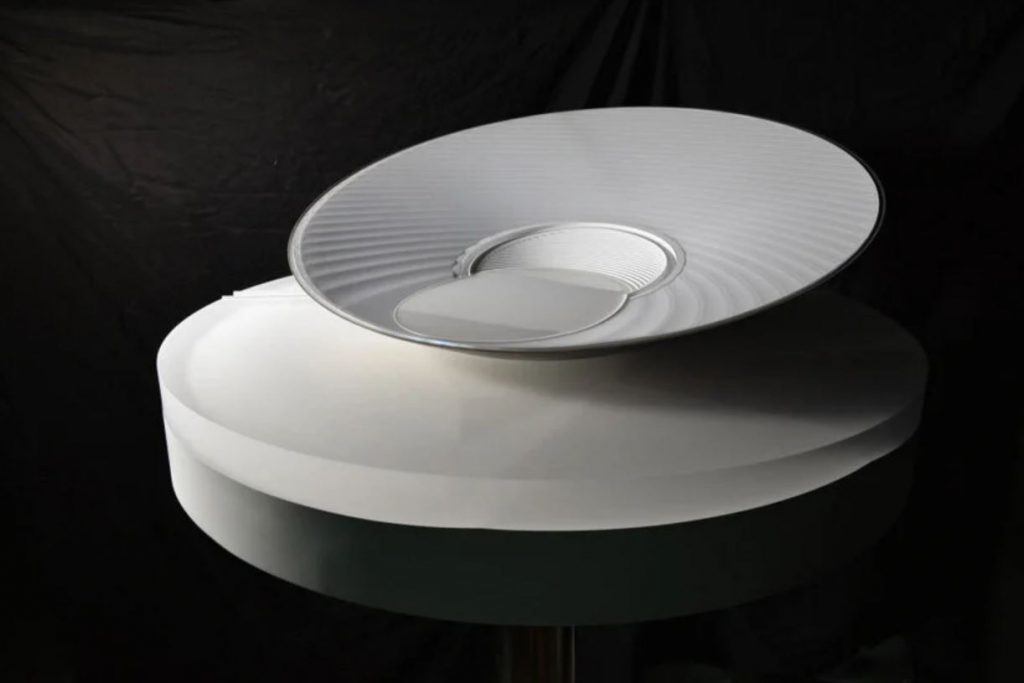
Lunar proposal by Snøhetta
The design represents the remnants of a vessel that transmits data to the world, for the world. “We have now arrived at the era of data. The data of the greater bay area and even the whole country will be reflected through the one moon – Lunar,” the team explains.
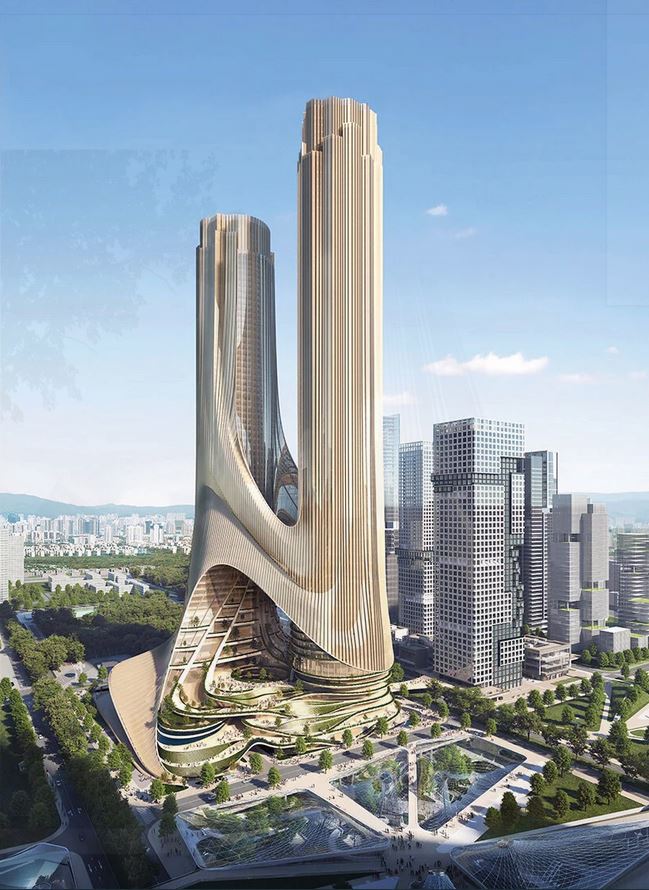
Tower C by Zaha Hadid Architects
Zaha Hadid Architects (ZHA) has been announced as the winner of a competition to build ‘Tower C’ at Shenzhen Bay super headquarters base. This business and financial center will unclude clusters of corporate headquarters within a global technology hub accommodating 300,000 employees each day and will serve the greater bay area of Guangdong, Hong Kong, and Macau.
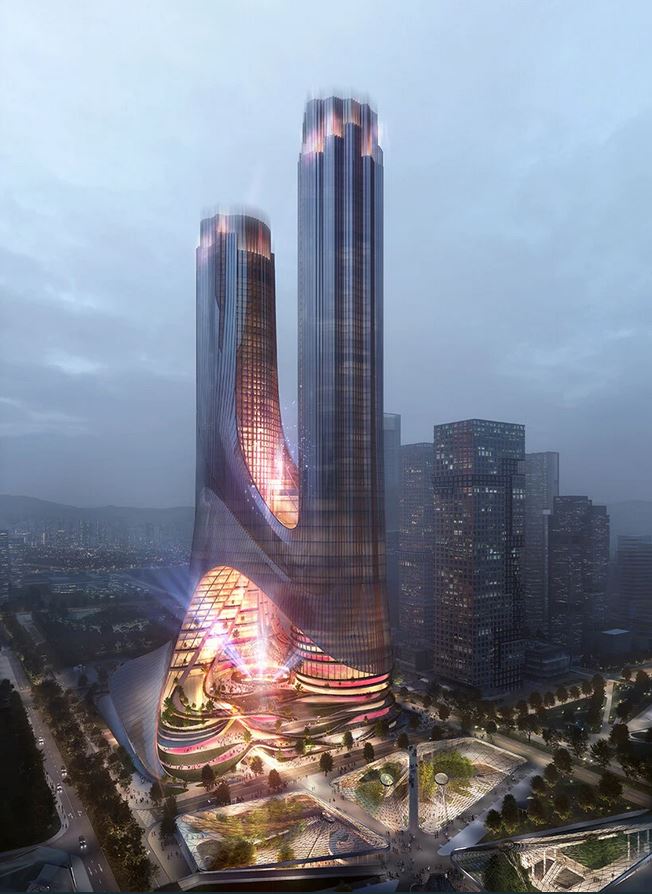
Tower C by Zaha Hadid Architects
The design by ZHA comprises a ‘multi-dimensional vertical city’ that features two towers rising to a height of nearly 400 meters. The towers are joined together by sweeping bridges that accommodate cultural and leisure attractions and offer panoramic views of the city.
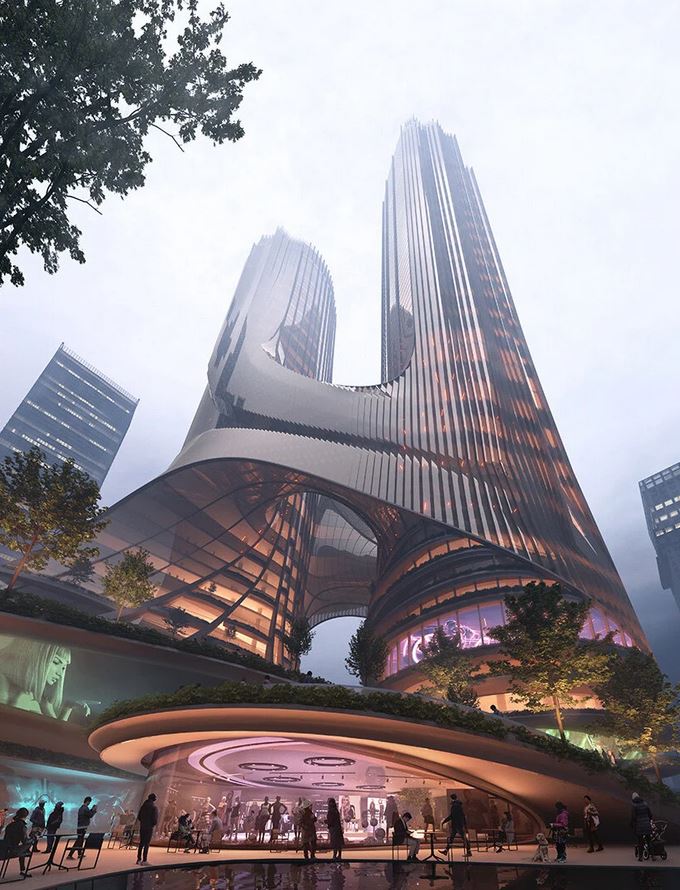
Tower C by Zaha Hadid Architects
The building accommodates column-free naturally-lit office space, shopping, entertainment, and dining amenities, a hotel, a convention center, and cultural facilities with exhibition galleries. The Tower’s terraced podium with integrated aquaponics gardens connects with the adjacent park and open plazas to create a new public space.
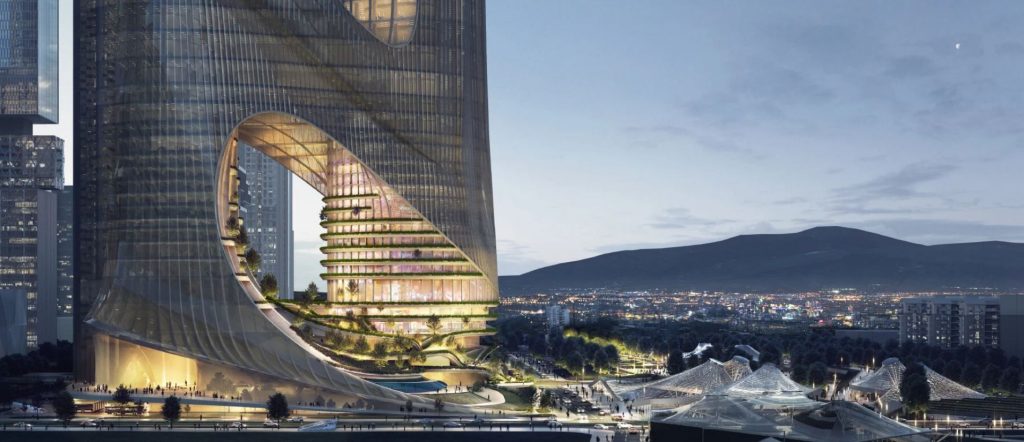
Tower C by Zaha Hadid Architects
From an environmental perspective, the design includes an array of sustainable choices. The building incorporates water-collection and recycling, as well as photovoltaics to harvest solar energy for the district.

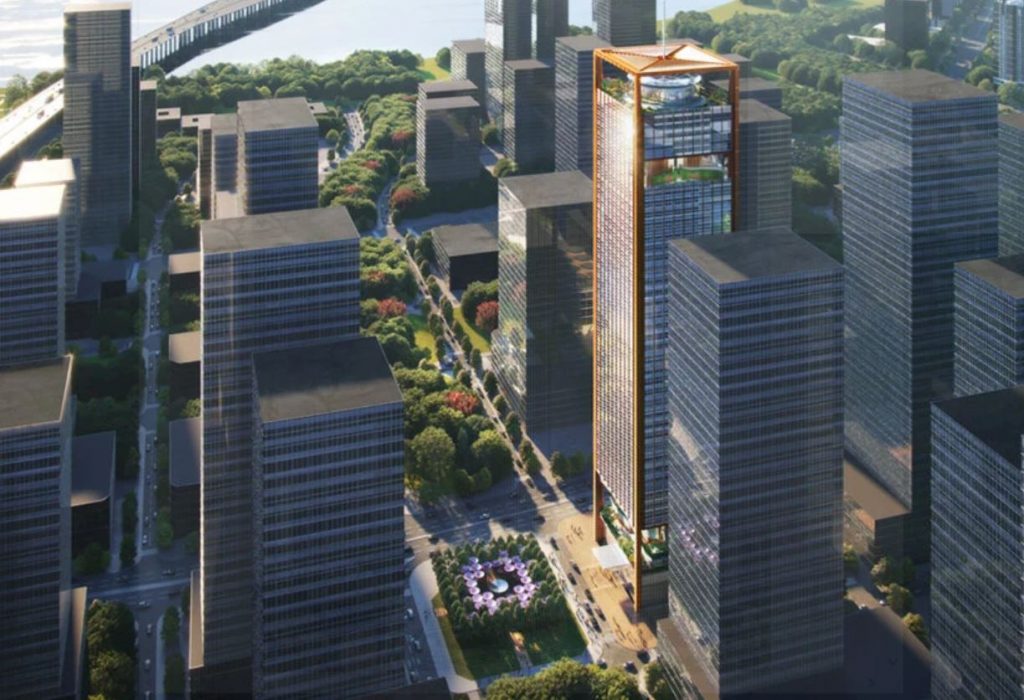
Qianhai Financial Holdings headquarter tower By Rogers Stirk Harbour and Partners
The competition for the Qianhai Financial Holdings headquarter tower has been won by a proposal created by Rogers Stirk Harbour and Partners, an international architectural practice based in London. Designed together with Aube Conception, the design presents a mixed-use commercial workspace high-rise that will introduce a new landmark to the skyline of the city. The Financial Holdings will occupy the top twelve stories as their headquarters, while the remaining floors will contain commercial office space.
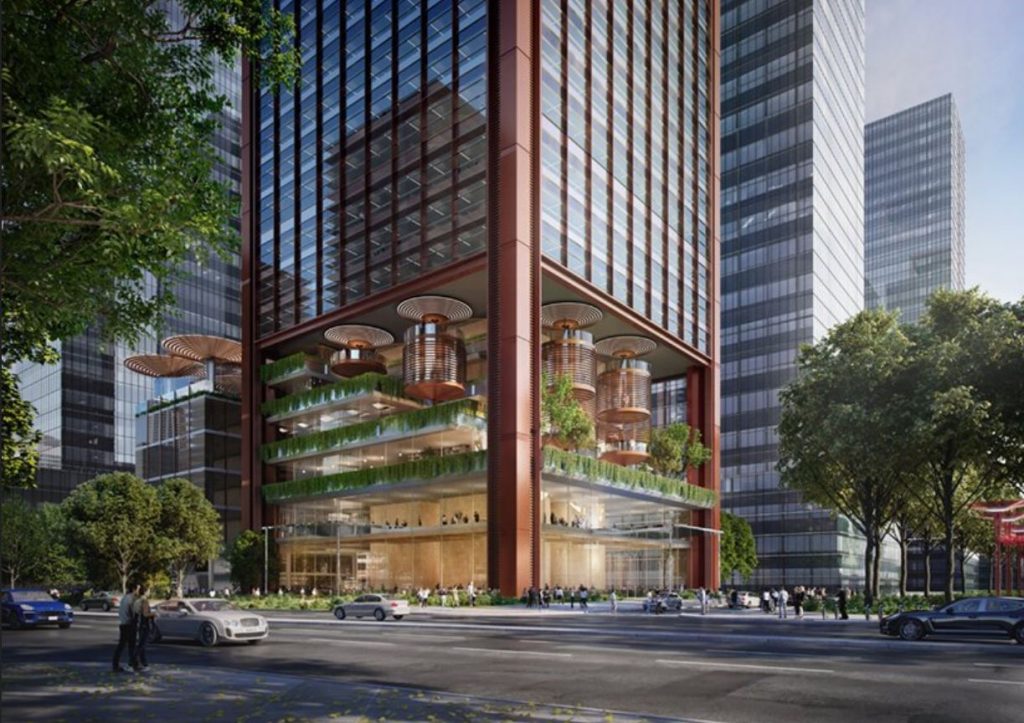
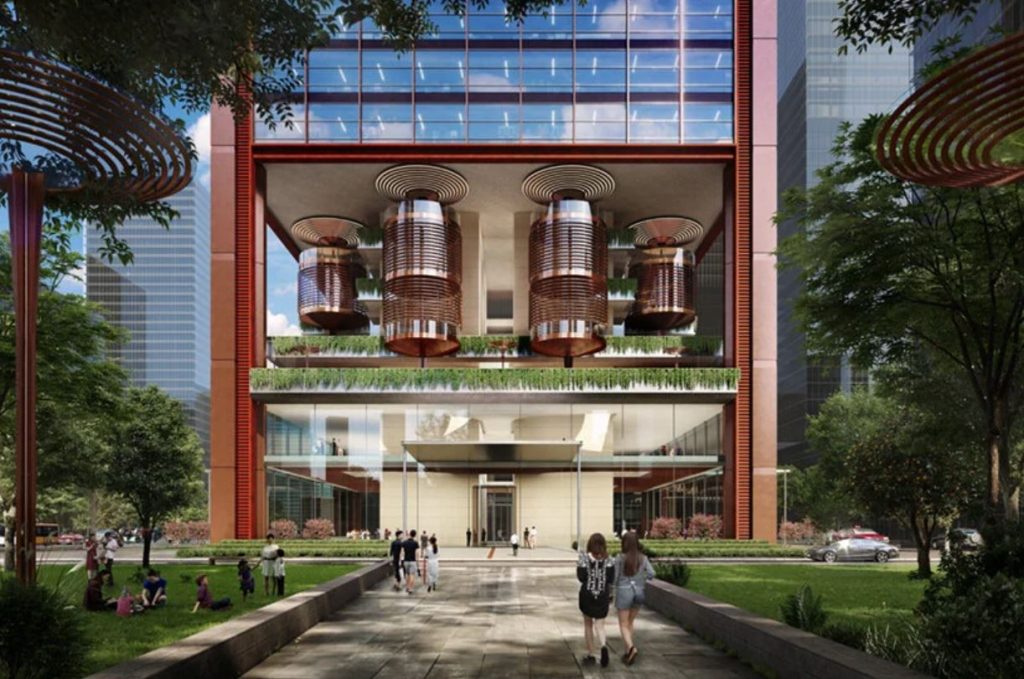
Qianhai Financial Holdings headquarter tower By Rogers Stirk Harbour and Partners
Clad in a metallic bronze finish, the building will rise 220 meters and include triple-height sky lobbies, a central atrium, and a rooftop pagoda, all supported within four mega columns. The skyline pagoda will feature a reflective glass structure that will refract the sunlight and project gentle beams of light six floors down through a central atrium. Each of the three sky lobbies, or ‘vertical gardens,’ that punctuate the façade of the tower, is expressed with a fluid, sculptural form, and is symbolically finished with a metal associated with finance that responds to the view captured — copper (river), silver (bay), or gold (mountains).

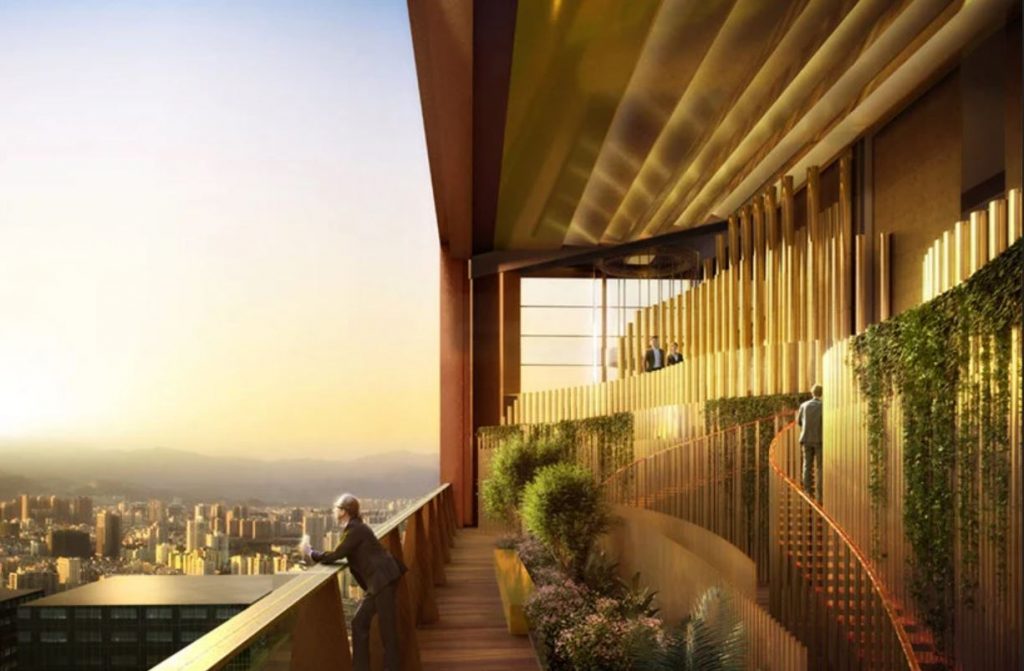
Qianhai Financial Holdings headquarter tower By Rogers Stirk Harbour and Partners
At the level of the street, a free-flowing public ground plane will take shape as a new park with underground retail and connections to the metro. Above, four entrance podium floors will host green wing-tiered balconies.